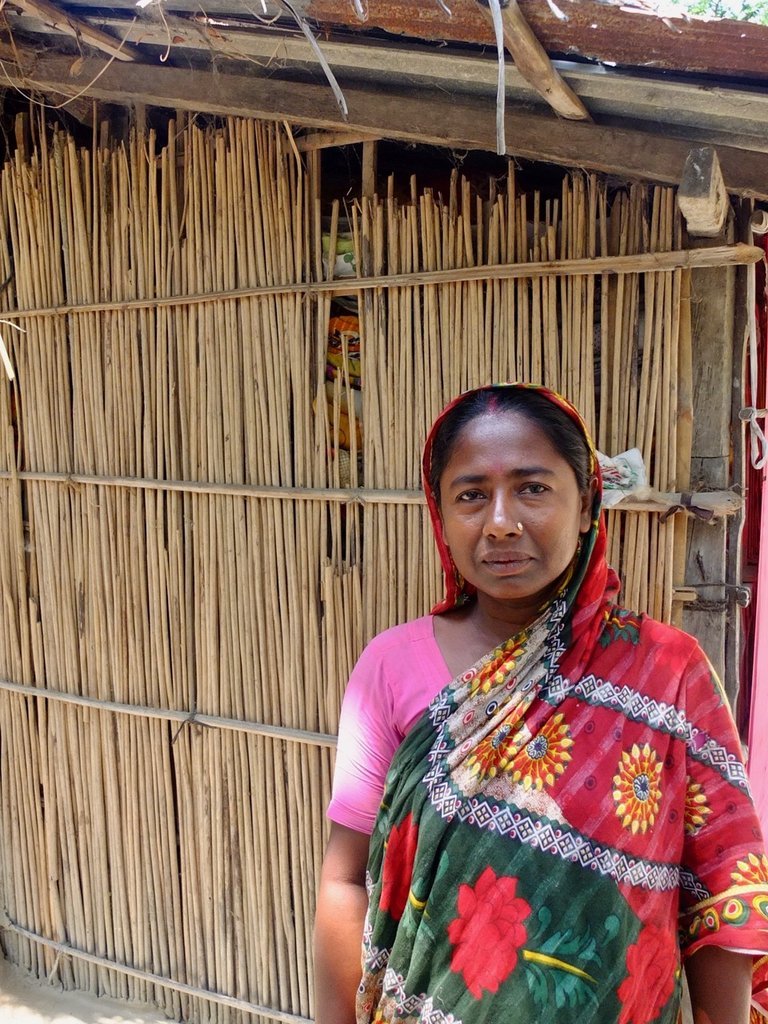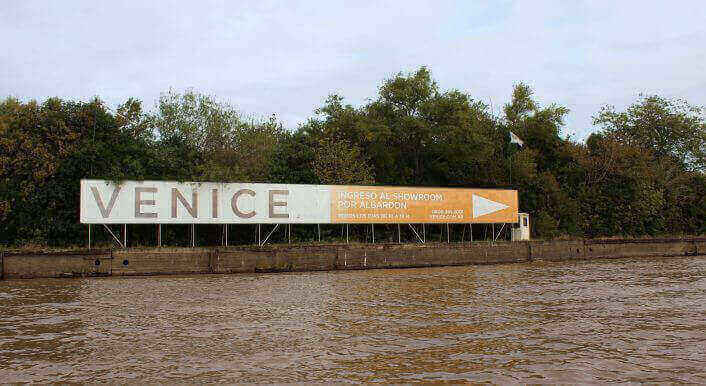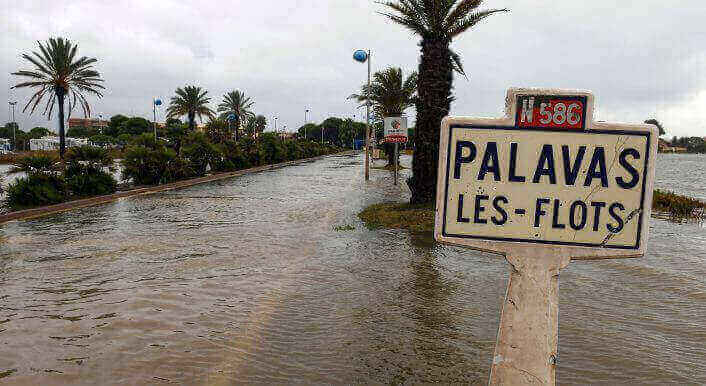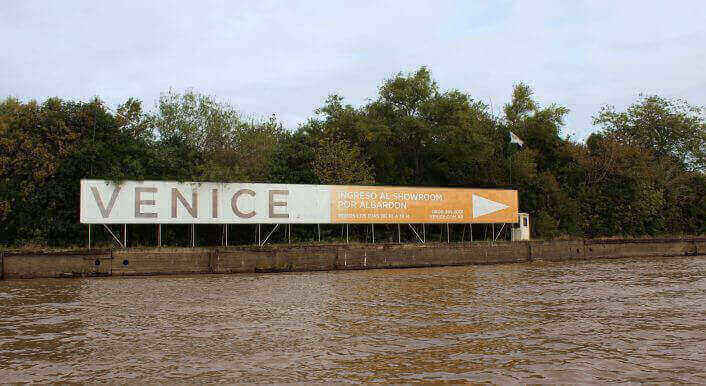Rising salinity batters Bay of Bengal farmers
Shondha Rnai’s small island paradise in the Bay of Bengal is threatened by salt. The little fresh water she needs is taken up by shrimp cultivation for the US and Europe.

She’s one of roughly eight million people living on artificial islands built by the Bangladeshi government in the 1960s to create 1.2 million hectares of farmland to feed its growing population.
Known by the Dutch term „polder“, these 139 islands surrounded by dikes are now under assault by rising seas, sinking land, a strained supply of river water, and a radical shift in farming practices: from land based-agriculture to shrimp cultivation.
Island farmers, such as Rnai, are struggling in this changed landscape.
Although rustic and primitive, her small plot of land on Polder 22 is lush with mango and guava trees. She lives in a house pieced together with mud walls, dried reeds and thatched roofing, and makes a decent living growing turmeric, lettuce, rice and even watermelon – a cash crop in the Ganges Delta.
But as the seas encroach, and her neighbors flood their land with seawater to grow the lucrative crustaceans Americans and Europeans dip in cocktail sauce, her irrigation water is turning brackish, making her land unfertile during the dry season.
“The lack of fresh water means we cannot have two crops of rice a year and other vegetables don’t grow well“, said the 34-year-old, wrapped in a red and green patterned sari. „Our production is being hampered by this water crisis.“

RISING SEAS AND SINKING LANDS
Columbia University’s Graduate School of Journalism’s Energy and Environment reporting project, in partnership with CORRECTIV, and Mediapart, is examining the global, environmental, social and demographic consequences of global sea level rise.
Scientists say Bangladesh – a low-lying country crisscrossed by the Ganges, Brahmaputra and Meghna rivers, as well as their branches and offshoots – will be one of the hardest hit areas as the oceans become warmer and the poles melt due to global warming, raising sea levels globally.
Data from the Permanent Service for Mean Sea Level shows that sea level in southwestern Bangladesh increased by roughly 7mm per year from 1980 to 2003, well above the global average of 3mm.
That is, in part, because the 6,000 km of embankments that surround the polders are helping to fuel sea level rise.
By constraining the tides inside the embankment walls, the polders’ dykes prevent the seawater from spreading out, instead pushing the tides further inland.
The result: sea levels is rising some 17mm a year in Khulna, the region where Rnai lives, according to a study by Julian Orford, an Emeritus Professor at the School of Natural and Built Environment at Queen’s University in Belfast.
“Our very act of trying to preserve civilization through building embankments is actually a major cause of reinforcing this rise in sea level“, says Orford.
In addition, the embankments also prevent sediment from the Ganges River from replenishing the polders’ soil, causing the islands to slowly shrink below the rising waters.
Making sea level forecasts for the massive Ganges–Brahmaputra delta, the largest delta in the world, is difficult because there are few long-term measurements of both sea level and tidal expansion. But, climate models indicate the global mean sea level could increase 1m by 2100 if carbon emissions continue unabated, a surge that could be catastrophic for this low-lying, densely-populated region.
“Dealing with this massive change that will affect up to 16 million people over the next 20 to 25 years is the worst coastal zone management problem in the world“, Orford said.
As farmers watch the slow, inevitable encroachment of the sea, they are also witnessing their farms die as a result of a much more immediate, but equally devastating change in the way they make a living: shrimp farming.

SHRIMP FARMING
In the Khulna region, ponds of brackish water for shrimp cultivation are everywhere, creating a landscape where the distinction between land, river and ocean is completely blurred to the eye.
Aquaculture has boomed over the last four decades in this riverine country, shifting the local economy from agriculture to aquaculture and turning Bangladesh into the world’s seventh largest exporter of farmed shrimp, behind China, Indonesia, Vietnam, India, Ecuador and Thailand.
According to the Food and Agriculture Organization, aquaculture is the world’s fastest growing food production sector.
“We went from the green revolution in developing delta countries to what is called a ‘blue revolution’. These deltaic countries are not only the rice bowls of the world, but they have more recently become protein bowls of the world“, says Kimberly Rogers, a researcher at the University of Boulder Colorado who specializes in human-environment interactions in deltas.
This dramatic shift was driven by shrimp farmers who flooded large swaths of land with seawater. While some land owners willingly agreed to turn their rice paddies into shrimp ponds, some landless farmers say outsiders flooded communal land with seawater.
For instance, most of the farmland in Polder 23 – an island next to Rnai’s – is now controlled by shrimp cultivators. The plantations where farmers once grew rice are now underwater, and all that is left is a dry strip of land that serves as an embankment.
Demographic data is hard to come by in Bangladesh, but farmers, scientists and land rights activists say many locals have been forced to migrate away from their homes because they cannot longer find work in the fields.
“Right now, almost all men spend most of the year working for a brick factory near Khulna city. Many of the women have migrated to the city to do domestic work, and some families have migrated to India or Dhaka in search for employment“, says Rokya Bagun, a 47-year-old mother of three.
“This is breaking families apart“, she adds.
Other communities, such as the one on Polder 22, have been able to physically keep the shrimp farms off their island, but they haven’t been able to save their water.
“I work with farmers who own small plots of land, some of whom have been forced to convert their rice paddies to shrimp because contaminants from adjacent shrimp farms – chemicals, feces and salt – have seeped into their land, and stunted or destroyed their soil quality“, said Rogers, who has studied the Ganges Delta for a decade.
Salinity data is hard to come by, but the few reports documenting the trend show it is getting worse.
A 2009 study by the government-run Bangladesh Soil Resource Development Institute showed that some 1.1 million hectares of arable land in the coastal area were then affected by salinity, which marked a 27% increase in 35 years.
As well as higher sea levels, flooding, and stronger tides, shrimp ponds are also to blame, for the increase in salinity said Khandker Moyeenuddin, director of the institute.
While „shrimp farming is a threat to the environment“ because it increases soil salinity, the industry should continue because it is an important source of foreign revenue for the country, he said.
Meanwhile, the lack of freshwater is exacerbating salinization.
A massive engineering project in India to capture river water during the monsoon and divert it to drier areas through a network of reservoirs and canals is reducing the amount of freshwater that arrives in Bangladesh.
“Politicians making decisions in the upstream river basins are concerned about protecting their populations, their infrastructure and their agricultural productivity, but they’re not thinking ‘Oh, hold on, this big canal system will divert water away from the delta in the next country’. That’s not happening“, says Rogers.
ADAPTATION VS MALADAPTATION
Scientists and government officials are struggling to design adaptation strategies to help farmers cope with the rising seas and increased salinity. The Bangladeshi Rice Research Institute has developed saline tolerant rice varieties, which is helping farmers harvest better yields – but it’s not enough.
“Once they have a variety that can tolerate three grams of salt per kilogram of water, salinity in the coastal area goes to four. Then, once they develop one that can tolerate five, the low-lying coast has gone to seven. The problem moves faster than the solution“, says Saleemul Huq, the lead author of the chapter on Adaptation and Mitigation in the IPCC’s fourth assessment report.
Huq, a well-known climatologist in Bangladesh, considers shrimp farming a „maladaptation“ to climate change that has caused significant economic and social problems for local people. But, if managed the right way, it doesn’t have to be a disaster.
He says aquaculture and rice cultivation could coexist. Shrimp farmers could allow local people to grow a rice crop after the monsoon, before they inundate the land with brackish water to cultivate the crustaceans for the remainder of the year.
Huq concedes, however, that some shrimp farmers refuse to share land with rice farmers and, in any case, there is no telling whether the soil can sustain both shrimp and rice in the long term.
In the end millions of people will be displaced over the next decade or two because of the insurmountable challenges posed by salinity, tidal surges, flooding and the cyclones that regularly hit this region.
The latest cyclone, Mora, battered the coastal belt in May killing at least six people and forcing the government to evacuate 1 million people.
Huq says that a process of „facilitated adaptation“ should be implemented to give farmers means for surviving and adapting, while providing education and skills for their children so that „they don’t end up being farmers and fishers like their parents but can get jobs in the cities and the towns, and when they move, they can take their parents with them.“
The author takes part in the Energy and Environmental Reporting Project of Columbia Journalism School post-graduate fellowship program and is supported by the Blanchette Hooker Rockefeller Fund, Energy Foundation, Open Society Foundations, Rockefeller Brothers Fund, Rockefeller Family Fund, Lorana Sullivan Foundation and the Tellus Mater Foundation. The funders have no involvement in or influence over the articles produced by project fellows in collaboration with correctiv.org



